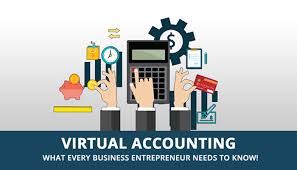Ten Strategies to Improve Client Accounting Services
Accounting Services Clint Eastwood in The Rookie said, “If you want a guarantee, buy a toaster.” There is no question that many CPA firms are conservative in offering Client Accounting Services.
But are they so conservative they are missing value-added opportunities? It is my opinion that CPA Firms need to be thinking differently about Accounting Services and the entire menu of Accounting Services they offer. Technology is rapidly changing client requirements and the way business is done. The following ten strategies are listed to make you think and communicate with your partners, managers, staff, and clients. By doing so, your firm can develop strategies that address key firm dangers: lack of growth, lack of succession, and lack of talent development. The list is not ranked by level of importance, but rather a list to help you think and develop beneficial strategies.
#1 – Independence or Advocacy
The rules of independence have long driven the profession in the core Accounting Services of tax and accounting, however, this is also a limiting factor when it comes to the breadth and depth of services a firm can offer its clients. We refer to these Accounting Services as adjacent (new to the firm or expanding existing business) and transformational (new services and breakthroughs). Knowing where to play in the market and how to win is extremely important. Would your firm be better off to choose advocacy and increase the number of services offered? What percent of your current revenues are from core Accounting Services? What services do your existing clients need?
#2 – Menu and Service Levels
Develop a list of Accounting Services that small business and not for profit organizations need. Yes, accounting and tax compliance are included in this offering. But there are many Accounting Services that may be valued higher and are more important to the leadership of the company or organization. Some of the high-level Accounting Services such as strategic planning, accountability, talent development, team building, technology, web strategy, cash flow projections, and budgeting are often overlooked due to the focus on L-1 services. The attached service level graphic demonstrates how to offer both core and higher value-added services. Is your firm capable of offering these services? Do you ask for L-2 and L-3 business and referrals?
#3 – Service Delivery Team
In order to expand client accounting services, firms should use the delivery team approach rather than the “rugged individual” approach. This provides better services to the client, allows for the utilization of unique abilities, and assists in succession planning. Not all of these Accounting Services require a CPA license, so it is possible for firms to build broader skill-based teams. Does your firm use client service, delivery teams? Have you utilized testing like the Kolbe Index to determine each team members’ unique abilities and team synergy?
#4 – Champions/Leaders
Each team needs a champion in order to ensure success. The characteristics of a champion are; they have a purpose greater than themselves, team builder, access to resources, politically connected, proven track record, and passion. By knowing peoples’ unique abilities it is much easier to identify champions. In too many firms, client accounting services have been assigned to people without these characteristics and they have been left without resources to meet the challenges. Who are the champions in your firm? Do you have champions who are passionate about client accounting services?
#5 – Unique Processes
Every firm has or should have unique processes. These processes should be documented in order to maintain consistency and train others. By naming the process, you own the process and can differentiate. Start by listing the processes your firm currently utilizes in client accounting services. Define the processes you need to meet client requirements. Think like a lean startup company in order to reduce the risks associated with leadership, staffing, platform, service, pricing, capabilities, technology, opportunities, complexity, and regulations. What unique processes do you currently have? What unique processes do you need to develop? Who will be responsible for the development of those processes and by what date?
#6 – Platform & Business Model
Trying to utilize old platforms and the effort based economy tactics (hours times dollars) will not work. Firms need a platform that fosters collaboration among the client, members of the client accounting services team, and other advisors (internal and external). Cloud-based solutions meet this requirement and are rapidly being deployed by the leading firms. Transferring of files, reconciliations, and data entry are tasks that can be eliminated with the new cloud-based platforms. Value is determined by the client, not by the hours invested in the project! What will it cost the client to provide these services internally? What value will the client receive from utilizing the firm’s platform and processes? Do we utilize a value creation agreement that protects the client and the firm? Does the value creation agreement allow for change orders? Is the value creation agreement reviewed and discussed with the client at least annually?
#7 – Entrepreneurship and Management
Firms need both entrepreneurship and management to be successful. With both entrepreneurship and management firms reduce risk and waste, increase innovation and learning, and provide clients with a new kind of accounting services. Management is often viewed as serious, dull, and bland while entrepreneurship is cool, innovative, and exciting. Success requires both. Who are the entrepreneurs in your firm? Who are the managers? Can they work together? Who else will be on the team?
#8 – Pricing
Pricing is extremely important and requires thought, upfront communication with the client, and sales skills. Frankly, many accountants are not good at pricing and should only be focused on the delivery processes. People with value creation skills should be responsible for pricing and placed in conversations with clients prior to the delivery of Accounting Services that carefully define the scope and terms of the engagement. Change orders should also be part of the pricing strategy. Spending the time to define the scope and ask clients questions related to their dangers, opportunities, and strengths will provide increased opportunities and improve margins. Packaging multiple services together result in happy clients and increased margins. Who is responsible for pricing in your firm? Do you use value creation agreements? What percent of your revenues would you like to come from value creation agreements within 1 year, 2 years, and 3 years? Who is going to be your pricing leader? Who are the top 10 clients in your firm to discuss value creation agreements with?
#9 – Trusted Business Advisor
CPAs have earned the reputation as the most trusted business advisor but most do not take the role seriously enough and provide clients with as many services as their clients desire. CPAs too often focus on Level 1 services, while clients value Level 2 and Level 3 services (See diagram above). Why aren’t you offering clients Level 2 and Level 3 services? If you are, why aren’t you offering those services to more clients? Who are your top 10 prospects?
#10 – Resources to Ensure Success
As stated in the introduction, most firms are risk-averse, yet with the following resources the rewards are high and the risk is extremely low. In fact, the risk is probably much lower under the client accounting services model than many existing models of only providing tax and accounting and auditing services. The required resources are:
- Champions
- Platform
- Existing client base
- Unique ability team
Leadership and a shared vision are keys to successful firms. Do you have a collaborative platform? Do you utilize unique ability teams? Do you have a client base that can utilize Level 2 and Level 3 services?
Change is constant. Results are determined by experiences that drive beliefs, beliefs that drive actions, and actions that drive results. The fastest way to improve results is through goal setting and accountability. To improve results you must focus on the belief systems of your partners and staff. This requires leadership, vision, and a written plan. Even more important is the business model and platform firms utilize. New technology and innovative solutions are changing the way clients do business? Is your firm changing and are you prepared to continue as The Trusted Business Advisor?
Welcome to the Gutenberg Editor
The goal of this new editor is to make adding rich content to WordPress simple and enjoyable. This whole post is composed of pieces of content—somewhat similar to LEGO bricks—that you can move around and interact with. Move your cursor around and you’ll notice the different blocks light up with outlines and arrows. Press the
How to Increase Profit Margins Through Virtual CFO Services
How to Increase Profit Margins Through Virtual CFO Services

Great Accounting Firms Share These 10 Traits
Great Accounting Firms Share These 10 Traits which has gone far beyond the paper-pushing days and now involves acting as a virtual CFO

Tax Accountant in Miami Cope with IRS Tax Season Delay
Tax Accountant said IRS delays start of tax season for individual returns would be postponed until February 17 with some as late as March

Miami Accountants Philosophy of Up or Out
Its up or out for Miami Accountants firms are faced with the dilemma of keeping long-term managers that are not ready to be equity partners or let them go.

Contadores en Miami Explican Auditorías del IRS
Contadores en Miami, Gustavo A Viera CPA, explica los pasos de una auditoría, desde la notificación de la auditoría hasta el cierre de la misma
Home » Blog » Accountants in Miami » Ten Strategies to Improve Client Accounting Services

